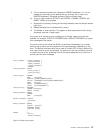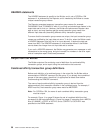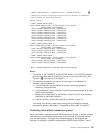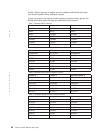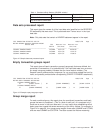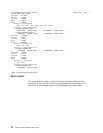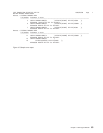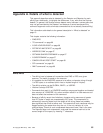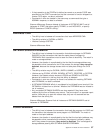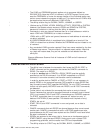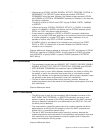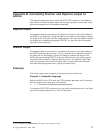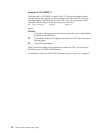
Appendix A. Details of what is detected
This appendix describes what is detected by the Detector and Reporter for each
affinity type. Additionally, it highlights the differences, if any, with what the Scanner
detects. (In general, the Scanner always detects more, because it covers paths that
may not get exercised by the Detector, and because it cannot see beyond the
command argument zero to eliminate commands that do not actually cause affinity.)
This information adds details to the general description in “What is detected” on
page 13.
This chapter contains the following information:
v “ENQ/DEQ”
v “TS commands” on page 66
v “LOAD HOLD/RELEASE” on page 66
v “RETRIEVE WAIT/START” on page 66
v “ADDRESS CWA” on page 67
v “GETMAIN SHARED/FREEMAIN” on page 67
v “LOAD/FREEMAIN” on page 67
v “CANCEL/DELAY/POST/START” on page 68
v “SPI commands” on page 69
v “WAIT commands” on page 69
ENQ/DEQ
v The affinity here is between all transactions that ENQ or DEQ on a given
resource. The match is made on the resource.
v It is possible for the ENQ/DEQ resource to be either a character string of length
1 to 255 bytes, or an address (which has an implied length of 4 bytes).
v The affinity relation can be GLOBAL, BAPPL, or USERID.
v Lifetime is always SYSTEM.
v Commands that result in a LENGERR condition are grouped together and treated
as a resource of ’LENGERR’. Any other condition results in a valid resource and
does not affect the treatment of the command.
v Because of affinity record size limitations, character string resources of greater
than 207 bytes in length are compressed to 207 bytes. The compression is
achieved by removing bytes from the middle of the string (these are probably
less significant than those at either end). This means that such resources may be
flagged as being the same when they are not, if the only variation is in the
removed bytes. Check all such compressed resources to see if that is the case.
The Reporter flags such compression, and pads the resource back out to the
correct length for the report, by inserting ’?’ characters.
© Copyright IBM Corp. 1994, 1999 65
|



